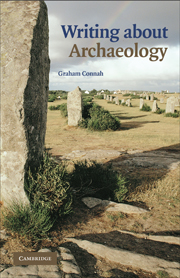Book contents
- Frontmatter
- Contents
- Figures
- Preface and Acknowledgements
- One Creating the canon
- Two Learning from others
- Three Readership determines form
- Four Turning data into text
- Five The process of writing
- Six Visual explanation
- Seven Pleasing everyone
- Eight Publishers, editors and referees
- Nine The publication process
- Ten The aftermath
- References
- Index
Six - Visual explanation
Pictures that should talk
Published online by Cambridge University Press: 05 August 2012
- Frontmatter
- Contents
- Figures
- Preface and Acknowledgements
- One Creating the canon
- Two Learning from others
- Three Readership determines form
- Four Turning data into text
- Five The process of writing
- Six Visual explanation
- Seven Pleasing everyone
- Eight Publishers, editors and referees
- Nine The publication process
- Ten The aftermath
- References
- Index
Summary
Back in the early 1970s I knew a university where the Faculty of Arts lecture theatres had no projection facilities of any sort. When it was pointed out that in lectures about archaeology it was necessary to use either slides or an overhead projector (this was long before PowerPoint was even thought of), one of the historians in the Faculty remarked that if one's lectures were any good one did not need pictures. The really disturbing thing about this comment was that I had the distinct impression that he was actually serious. I should perhaps apologize at this point to the vast majority of historians who clearly do appreciate the value of illustrations in what they write. However, it seems to have long been the case that archaeologists have had a greater need for and appreciation of visual images than historians. History, like most of the humanities, privileges text rather than pictures; after all most of its evidence is in the form of text. In contrast, archaeology, straddling the humanities and the natural sciences, has a fundamental requirement for a wide range of illustrative material. The subject is primarily concerned with physical evidence, with artefacts, with sites, with chemical analyses and so on; pictures in the widest sense of the word become essential. They can include photographs, photomicrographs, drawings of objects, maps, plans, excavation section drawings, histograms, a variety of technical diagrams and (although strictly speaking they are part of the text) tables of various sorts.
Information
- Type
- Chapter
- Information
- Writing about Archaeology , pp. 91 - 135Publisher: Cambridge University PressPrint publication year: 2010
